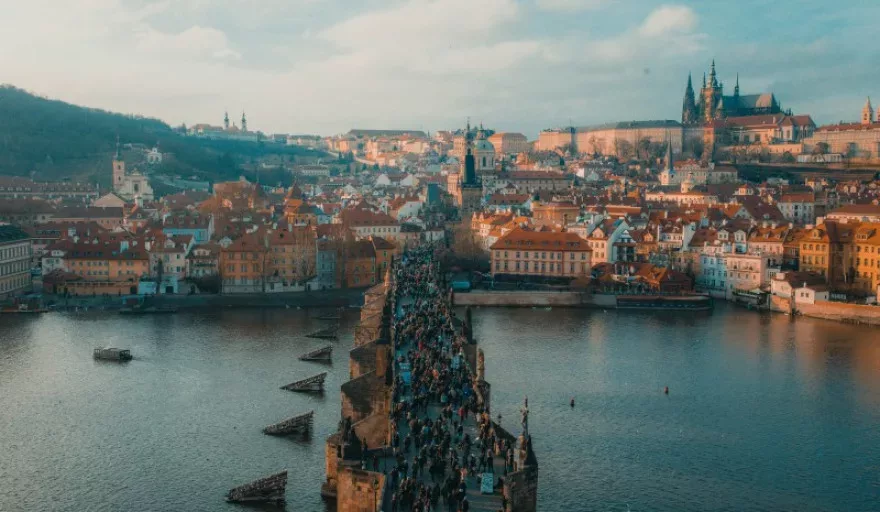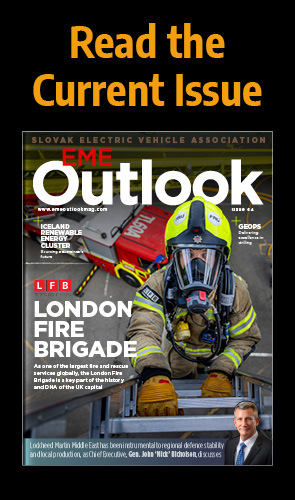INTRODUCTION
Prague is no longer one of Europe’s hidden gems but remains brilliant nonetheless, the city’s alluring architecture, culture and history having combined to create a romantic atmosphere which continues to draw increasing numbers of tourists year after year.
An urban environment steeped in tradition, its origins dating back more than a millennium, the Czech capital is mapped out by a maze of cobbled streets and fairy tale-esque buildings which house everything from quaint cafes to the world’s largest LEGO museum.
You might think this architectural prowess would be matched by an equally thriving traditional arts scene. And you would be correct. It’s the birthplace of Franz Kafka, an individual widely considered to be one of the key figures of 20th century literature. Further, an abundance of galleries and museums showcase an array of the city’s best artists – ideal attractions for visitors to relax and unwind.
The city has a thriving business segment as well. 79 Czech companies rank on Deloitte’s overview of the top 500 largest central European companies, and many of these have a major footprint in Prague.
Indeed, whether you’re looking for the aesthetically breath-taking, culturally magnificent or simply the hustle and bustle of an urban epicentre, Prague truly has it all.
THE BUSINESS END
Like the rest of the country, Prague’s economy is highly diversified.
Much of the private sector is focussed on heavy industry, with anything from aircraft engineers and refined oil product specialists to the electronics and chemicals sectors thriving throughout the city. In fact, Prague is home to approximately one fifth of all national investments, much of this being attributed to world-leading research and development.
Equally, in the last decade, business services industries such as finance, IT and consulting have begun to flourish across the region. Yet despite this diversity, tourism remains the city’s primary source of revenue, accounting for 60 percent of the capital’s entire income.
Of the 10.6 million internationals who travelled to the Czech Republic in 2018, 6.7 million of these visited Prague. Equally, according to Prague City Tourism, the number of tourist information centre queries rose to more than 1.6 million last year, up from the 1.129 million seen in 2017.
This upward tourism-centred trajectory has already shown healthy signs of continuing through the first half of 2019, its visitor numbers having increased one percent on the first six months of 2018 – something that has stirred up distinct optimism amongst tourism bodies, including the Prague Convention Bureau.
Q&A WITH HANA KREJBICHOVÁ, MARKETING AND PR MANAGER, THE CONVENTION BUREAU
Mandated to strengthen positive awareness of Prague, the Convention Bureau continues to propel the city’s standing as a crucial destination for conventions, congresses and business meetings.
Having helped to increase revenue and stimulate economic growth for the local community, the Bureau is more positive now than ever before, coming off the back of what was a record-breaking 2018.
A year on since we last spoke with Hana Krejbichová, the organisation’s Marketing & PR Manager, she again answers our questions, showcasing how the Czech capital’s blossoming leisure and business tourism offerings have continued to excel.
Over the past year, how has Prague Convention Bureau developed and progressed in terms of its key objectives and the messages it tries to get across?
Hana Krejbichová (HK): 2018 was again record-breaking for Prague. We welcomed the highest number of events in the history of Czech Statistical Office’s monitoring: 4,534. That is 2.2 percent more than in the record year of 2016 and 3.3 percent more than in 2017. Prague’s meetings industry was very successful last year not only on the local level, but also in the international comparison. In the ICCA (International Congress and Convention Association) global ranking, which rates destinations based on the number of association congresses and conferences held, Prague ranks ninth. It has maintained its position in the world’s top 10 most popular meeting destinations, where it ranked eighth in the previous year.
At the Prague Convention Bureau, we are also focused on developing our Ambassador Program – a strategic programme focused on the promotion of the Congress Ambassadors – local representatives of international professional associations in Prague and the Czech Republic. Within the Program, we annually hold the Ambassador Awards Evening. It is an occasion when doctors, scientists and other leading specialists who represent the Czech Republic and Prague in international professional associations, and those who have significantly contributed to expert events being held in the Czech capital, are awarded. In April 2019, we organised the 10th awards ceremony. Since 2010, when the initiative was first introduced, more than 40 congress ambassadors have been awarded. At the occasion of the Ambassador Awards Evening’s 10th anniversary, the new Ambassador Program website was launched.
How would you say Prague has developed in recent years as a business travel hub and what are the key reasons behind its growing appeal?
(HK): The key players of Prague meetings industry have focused especially on the renovation and enlargement of their properties in recent years. Around 15 large conference hotels have been renovated in the last two years and there are more projects planned for the upcoming months. In autumn 2019, another multifunctional venue for up to 10,000 delegates will be opened in Prague and we hope that we will be able to host not only larger conferences, but also more events concurrently thanks to this new venue. The combination of rich history together with all these improvements is definitely one of the most appealing reasons for event organisers to hold their events in Prague. The city is also very well located and thus easily accessible by plane and, for Europe-based travellers, by trains or cars.
Why, in your opinion, should someone visit Prague?
(HK): There are many reasons why we would recommend someone to visit the Czech Republic’s capital. The main one is undoubtedly the preserved history present in the city, including the number of historical monuments which you can not only see but also visit. The world’s oldest astronomical clock or world’s largest ancient castle area – these you can find only in Prague. But there are many other good reasons to visit – to taste Czech cuisine in Michelin Star restaurants or explore Prague’s hipster quarters and cafés. Even to taste Prague wine, as there are also seven vineyards in the city. Prague, where 57 percent of its area is green, is the world’s greenest city, and its gardens are really something any visitor shouldn’t miss. If you are a transportation geek, you can try and use the world’s fifth best transportation system. And still, all of these come at very reasonable, affordable prices, suiting those travelling on a budget.
Are there any specific attractions, landmarks or places to eat and drink that you would recommend?
(HK): Definitely, but this depends a lot on whether you are a first-time visitor, or if you have already been to Prague many times. First time visitors should head to the Prague Castle area, the Old Town, taste local cuisine and explore the city centre. For those who want to avoid the crowds in the high season, the Prague City Tourism regularly updates its guide brochures focusing on the lesser known yet recommended Prague quarters that are sought by locals for their unique atmosphere.
What trends are transforming the tourism industry in Prague at present? How are you responding to these trends?
(HK): Prague is experiencing record-breaking numbers of tourists lately. Prague airport is planning an extensive enlargement in the near future and Prague City Tourism, responsible for the leisure tourism in Prague, has already prepared numerous guidebooks to showcase other parts of Prague to tourists in order to avoid over tourism in the city centre. Another goal is to increase the number of visitors returning to Prague regularly, as the majority of tourists are first-time visitors so far.
How do you see technology helping to transform Prague’s tourism offering in the coming years?
(HK): Many initiatives focusing on AI have emerged in Prague and the Czech Republic in recent years, and not only in the science arena. Virtual reality and robots slowly found their place in Prague hotels or other venues. This is one of the trends that our partners and service providers follow nowadays, and we are expecting even broader use of these technologies in the near future.
Can you detail any examples of AI in action?
(HK): Many of our partners already use robots to help customers with airport navigation, bookings, or travel tips in the hotels. Did you know that the word “robot” originated from the Czech language? It was first used in one of the novels written by Czech author Karel Čapek.
From a science perspective, the Prague.AI initiative was introduced in May 2019 by the Czech Academy of Sciences, Charles University in Prague, Czech Technical University in Prague and City of Prague with the aim of establishing Prague as an AI hub within five years. Prague is also the home city of the first ever computer programme that outplays human professionals at heads-up no-limit hold’em poker called DeepStack.
How do you see Prague developing as a business travel hub over the next year to two years?
(HK): We hope Prague will support the meetings industry as an ideal option of how to face and partially also prevent leisure over tourism in the city. With new openings and refurbishments, we hope that Prague will increasingly get on the lists of event planners that were not considering the Czech capital previously due to capacity limitations. We are optimistic about the future of business tourism in Prague. As statistical data shows, Prague is still very popular among event planners, and the number of events here is on the rise. We hope this trend will continue in the coming years, and we are trying to get the best support possible from the City of Prague to attract the organisers of congresses and conferences from all around the world through grants, administrative support, flight ticket discounts and/or free public transportation tickets.
IN FOCUS: THE CENTRAL BUSINESS DISTRICT
The Prague Central Business District epitomises the city’s growing economic success and thriving business travel scene.
A planned complex of multifunctional buildings is currently under construction in central Prague, this new hub set to stand in the vicinity of the Masaryk Railway Station and either side of the Prague Highway.
Powered by the visionary design of Zaha Hadid Architects, the site aims to transform and revitalise what is currently a largely disused site while meeting the city’s demands for more office space in the face of its booming service and IT industries.
Spanning a land area of approximately 22,000 square metres and costing CZK 6.5 billion ($280 million) to build, it is anticipated that the district will provide jobs for up to 10,000 people once it is up and running, as well as housing, a commercial zone and green spaces.
It will also connect the Prague 1 municipality with Karlín and Žižkov, bolstering the region’s overall mobility offering.
TRANSPORT LINKS
The Czech capital is the eighth most visited city in Europe, its world renowned Václav Havel Airport acting as a key transit hub for not only the city but the entire continent.
Owed to its four terminals operating direct connections to major cities around the world, from Moscow to Dubai to London, 17 million passengers passed through the airport in 2018 – a figure that’s expected to rise to 18 million this year.
Upon arrival, a short 15-minute (nine kilometre) taxi ride or 30-minute metro journey will take you to the city centre, where getting around is relatively simple for one of Europe’s major capital cities.
“Although it may not seem so at first, it’s a very small and compact city,” Krejbichová states, “making walking the best way of navigating the centre. Some take bikes, but as Prague is paved with cobblestones, its not always the easiest.
“For longer distances, public transportation is the best choice. The Prague system was ranked as being the fifth best in the world and the journey from the city centre to the outskirts takes only 30 minutes by metro.”




















